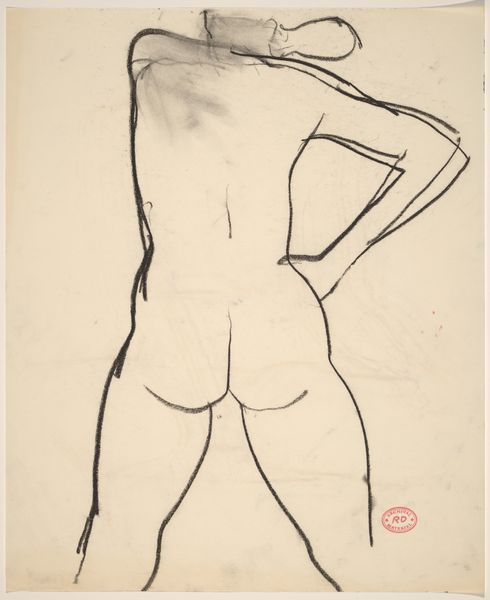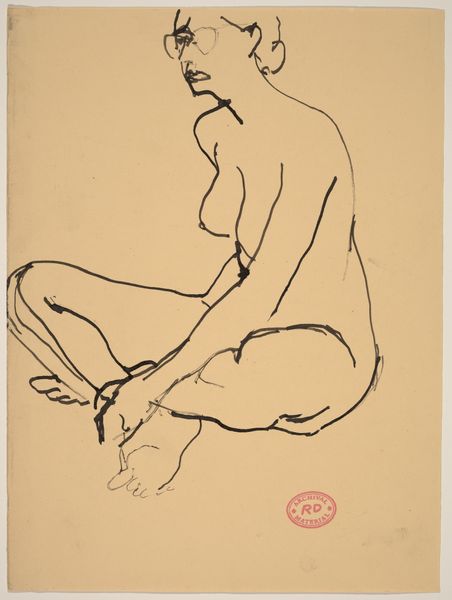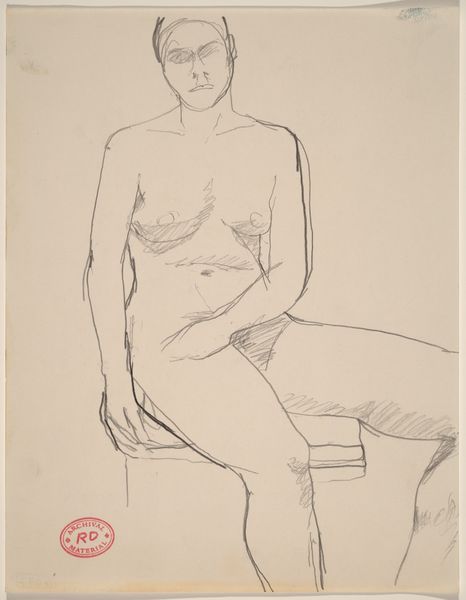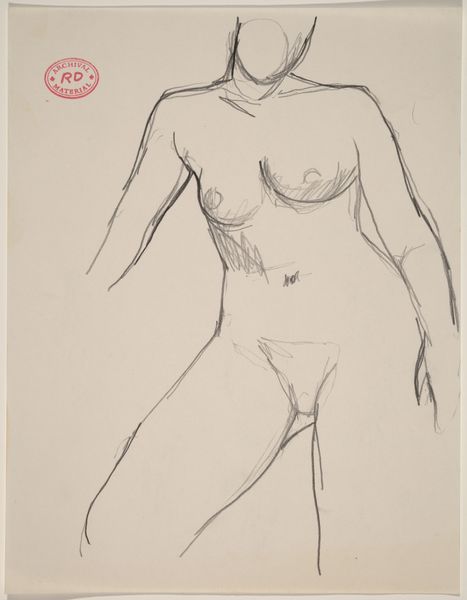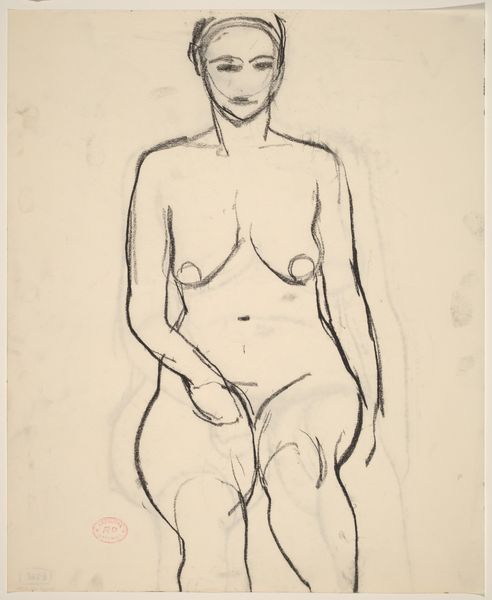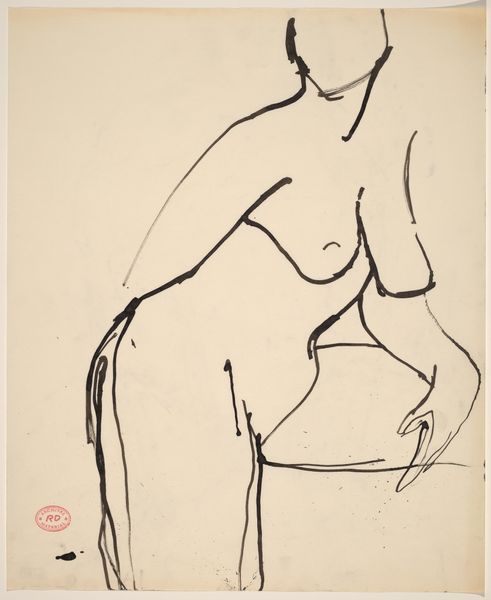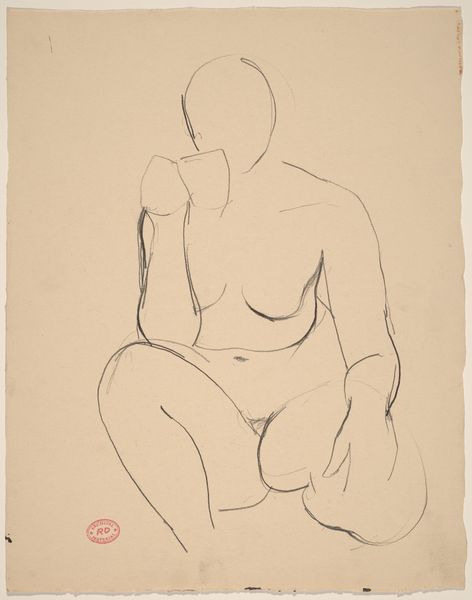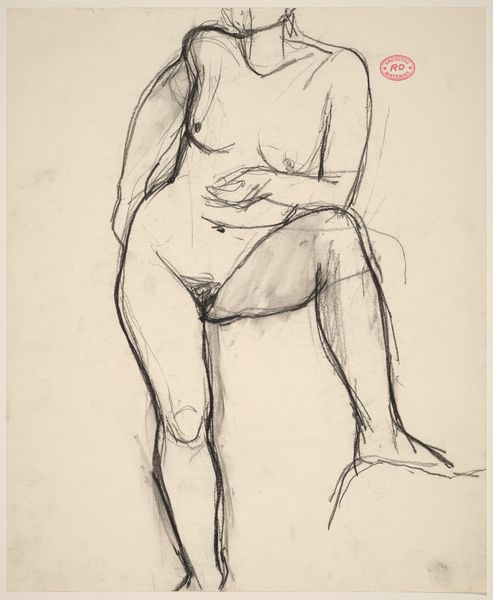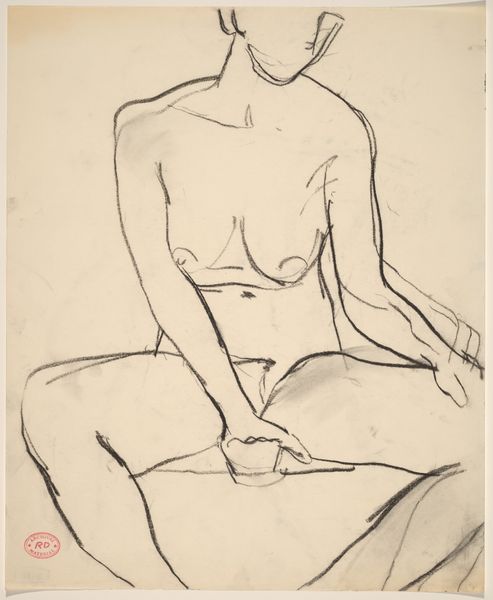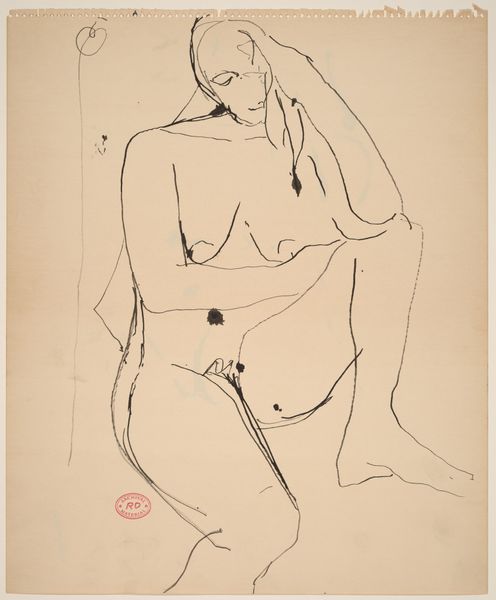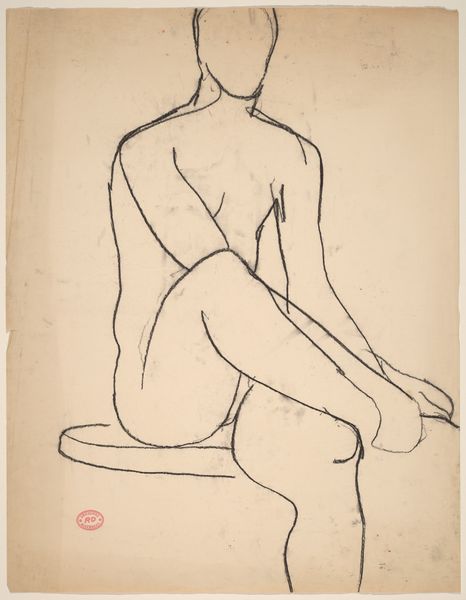![Untitled [standing female nude with hand on chair back] by Richard Diebenkorn](/_next/image?url=https%3A%2F%2Fd2w8kbdekdi1gv.cloudfront.net%2FeyJidWNrZXQiOiAiYXJ0ZXJhLWltYWdlcy1idWNrZXQiLCAia2V5IjogImFydHdvcmtzL2ZhNDNlODhlLWI0MzgtNDI2Yi1hNzcyLTk3M2FkMjJiMWEzZi9mYTQzZTg4ZS1iNDM4LTQyNmItYTc3Mi05NzNhZDIyYjFhM2ZfZnVsbC5qcGciLCAiZWRpdHMiOiB7InJlc2l6ZSI6IHsid2lkdGgiOiAxOTIwLCAiaGVpZ2h0IjogMTkyMCwgImZpdCI6ICJpbnNpZGUifX19&w=3840&q=75)
Untitled [standing female nude with hand on chair back] 1955 - 1967
0:00
0:00
drawing, pencil
#
portrait
#
drawing
#
figuration
#
bay-area-figurative-movement
#
pencil drawing
#
pencil
#
nude
Dimensions: sheet: 42.9 x 35.2 cm (16 7/8 x 13 7/8 in.)
Copyright: National Gallery of Art: CC0 1.0
Editor: We’re looking at Richard Diebenkorn’s "Untitled [standing female nude with hand on chair back]" created sometime between 1955 and 1967 using pencil on paper. It’s such a simple drawing, but the line work really captures the weight and form of the figure. What stands out to you most when you look at this piece? Curator: What strikes me is the *process*. Diebenkorn chose a humble medium: graphite. What kind of labor went into sourcing the graphite and creating the paper substrate? Think about how accessible these materials were, or were *not*, depending on who was using them in the mid-20th century. Was this an industrial product or handmade paper? Was the pencil factory unionized? The choice speaks volumes about accessibility, and what materials were ready to hand. Editor: That’s a good point. I hadn’t considered the politics embedded in something as simple as a pencil. It looks like there is a chair, so would Diebenkorn's choice to depict the nude female standing instead of sitting communicate something more or change our reception of the female gaze? Curator: It also calls attention to the performative nature of art. Was he rapidly sketching her in an active studio environment, or in a more composed, academic setting? Look at the confidence of some lines, the hesitant quality of others. Think about what kind of labor it demands to *pose*. All this helps to demystify the art-making, it becomes less rarefied, right? Editor: Absolutely! Focusing on materials really grounds the work. I hadn't thought about it that way. I was initially only appreciating it formally. Curator: Exactly, considering those questions, what is this work really *worth*? Editor: I’m leaving with a much better understanding of how Diebenkorn's piece really puts his process on display. Curator: And how everyday materials carry political meaning!
Comments
No comments
Be the first to comment and join the conversation on the ultimate creative platform.

